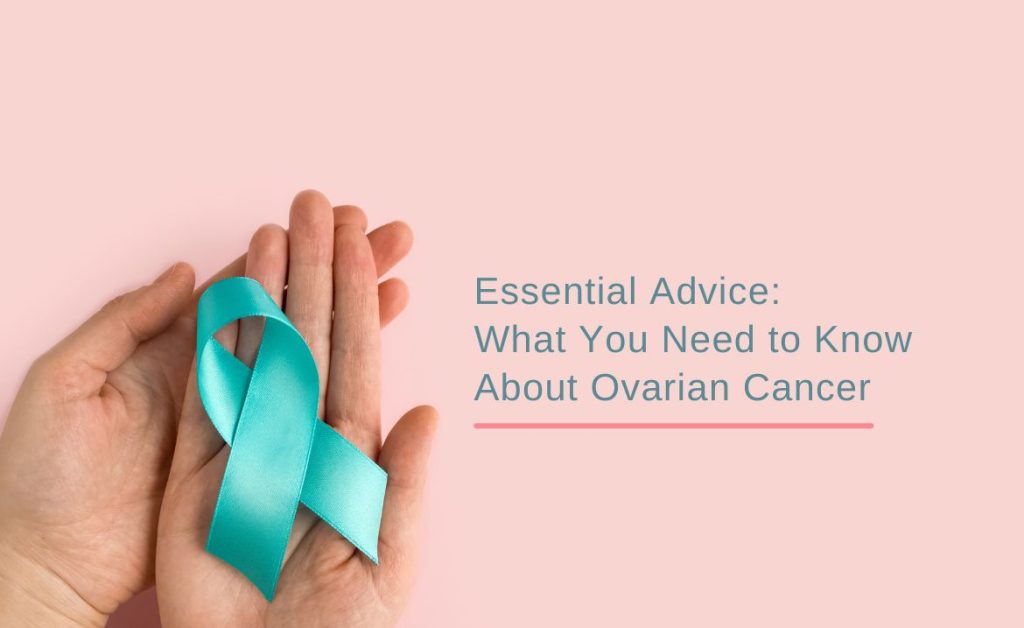According to data collected by Cancer Australia, an estimated 1,786 women were diagnosed with ovarian cancer in 2023.
It is often known as the silent killer due to the symptoms of ovarian cancer being much the same as those caused by less severe medical conditions. It’s also important to note that early-stage ovarian cancer rarely causes any symptoms. Hence, by the time you develop any signs and are diagnosed, the cancer will have progressed to an advanced stage.
Therefore, it is essential to raise awareness and begin conversations about the early signs and symptoms so you can be mindful of any changes occurring in your body to increase the chances of early detection.
With that said, below, we provide a quick guide on the early symptoms of ovarian cancer to keep an eye out for.
Early symptoms of ovarian cancer
The most reported symptoms of ovarian cancer are
- Bloating
- Pelvic/abdominal pain
- Feeling full after eating a small amount
- Feeling the urge to urinate often and urgently
- Extreme fatigue
Note that these five symptoms can occur at any time for various other reasons and thus can go unnoticed.
Other symptoms to look out for include:
- Nausea
- Indigestion
- Changes in bowel habits
- Back pain
- Pain during sex
- Sudden weight loss
- Unexplained sudden changes to your menstrual cycle, such as bleeding during periods or after menopause).
Causes and risk factors of ovarian cancer
Whilst the actual cause(s) of ovarian cancer is not known, there are a few factors that can increase the chances.
- Increasing age: While ovarian cancer can happen at any age, one of the major risk factors is aging – with the average age of diagnosis being 64.
- Hereditary: For instance, if you have a strong history of ovarian, breast, or bowel cancer within the family.
- Gene mutations: Inheriting faulty gene mutations in BRCA1 or BRCA2 genes.
- Smoking: Along with other health issues and cancers, this increases the chances of ovarian cancer.
- Not having children: Women who have not had children can be at a slightly higher risk of developing ovarian cancer.
Treatment options for Ovarian cancer
The treatment provided for ovarian cancer will depend on the following.
- What stage the cancer is at,
- The location of the cancer,
- The severity of your symptoms,
- Your general health, and
- If you wish to have your own biological children in the future.
Depending on your circumstances, your doctor will suggest one of the following treatments.
Surgery: To determine the extent of the disease, you will undergo surgery. This will enable your doctor to determine if the cancer is localised or has spread. During surgery, your doctor will remove the affected ovary or ovaries. In some cases, the uterus and fallopian tubes may also be removed.
Chemotherapy: Post-surgery, chemotherapy is given to eliminate any cancer cells that may still exist post-surgery.
Radiotherapy: If the cancer has spread to other parts of the body, such as your pelvic area, your doctor may also recommend radiotherapy.
LYNPARZA: As of 1ST January 2024, eligible patients have access to LYNPARZA, a medication used as part of maintenance therapy to help manage and treat advanced ovarian cancer, on the Pharmaceutical Benefits Scheme (PBS). To determine eligibility, patients must undergo an HRD (Homologous recombination deficiency) test to determine if they carry the BRCA mutation and are HRD positive.
When to see a doctor
While less severe conditions can cause many of the mentioned symptoms, it’s essential to seek medical advice from your doctor if any symptoms persist. Doing so will allow your doctor to carry out the necessary tests to determine what is going on.
If you have any of the above persistent symptoms and are concerned, contact our friendly staff at Wollongong Obstetrics and Gynaecology to book an appointment with Dr Kothari. Our team will support you every step of the way.
In the meantime, let’s keep the conversation going this Ovarian Cancer Awareness Month and beyond.

